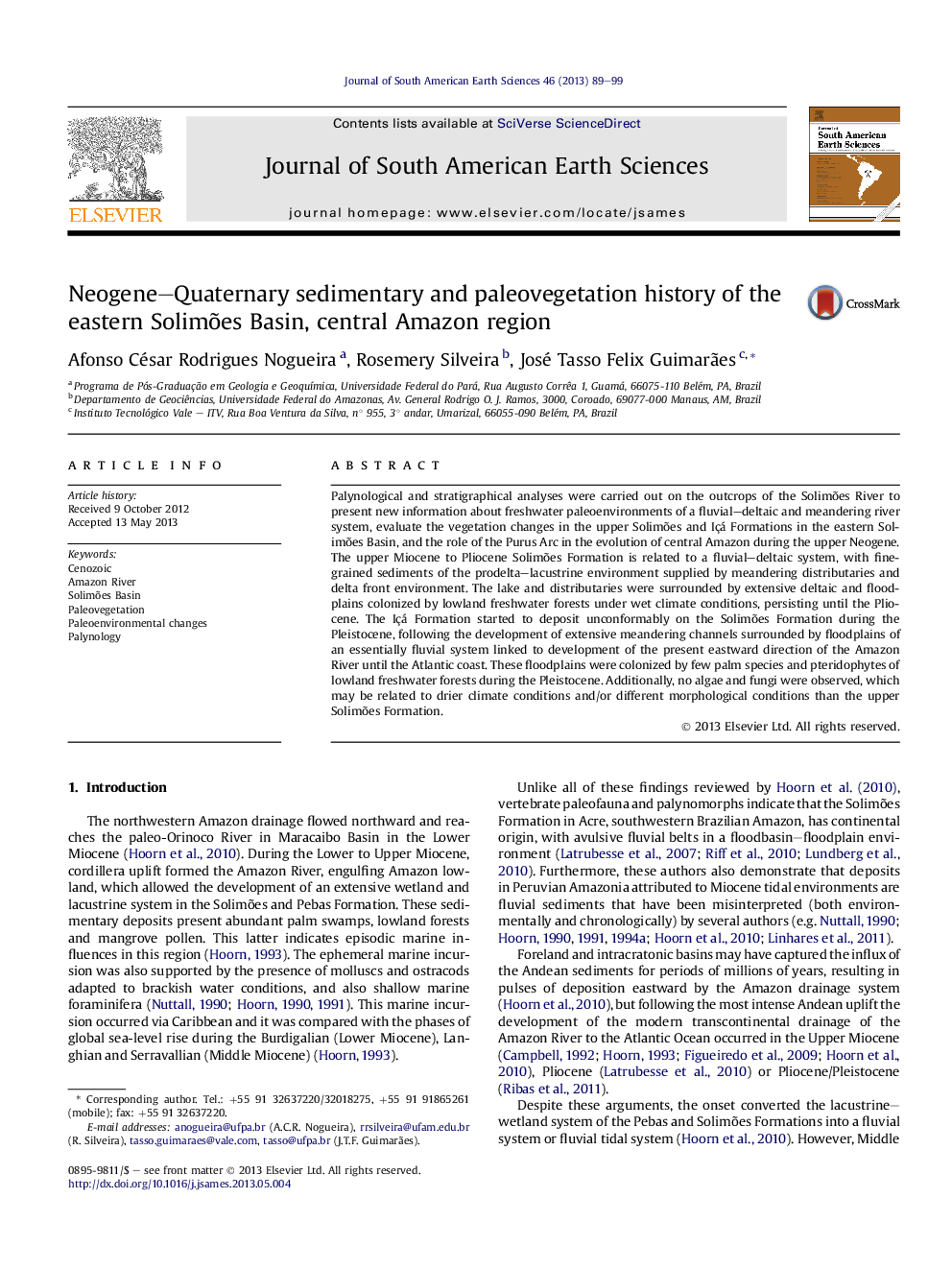| کد مقاله | کد نشریه | سال انتشار | مقاله انگلیسی | نسخه تمام متن |
|---|---|---|---|---|
| 4682425 | 1635163 | 2013 | 11 صفحه PDF | دانلود رایگان |

• The deposits of the Solimões Basin have ages of the upper Neogene to the Pleistocene.
• The Solimões Formation is of the Fenestrites zone of the upper Miocene to Pliocene
• The Içá Formation belongs to Alnipollenites verus zone of the Pleistocene.
• Reworked Paleozoic spores and acritarchs were provided of the uplifted Purus Arc.
• The Purus Arc was a geographic barrier in the Central Amazônia during upper Neogene.
Palynological and stratigraphical analyses were carried out on the outcrops of the Solimões River to present new information about freshwater paleoenvironments of a fluvial–deltaic and meandering river system, evaluate the vegetation changes in the upper Solimões and Içá Formations in the eastern Solimões Basin, and the role of the Purus Arc in the evolution of central Amazon during the upper Neogene. The upper Miocene to Pliocene Solimões Formation is related to a fluvial–deltaic system, with fine-grained sediments of the prodelta–lacustrine environment supplied by meandering distributaries and delta front environment. The lake and distributaries were surrounded by extensive deltaic and floodplains colonized by lowland freshwater forests under wet climate conditions, persisting until the Pliocene. The Içá Formation started to deposit unconformably on the Solimões Formation during the Pleistocene, following the development of extensive meandering channels surrounded by floodplains of an essentially fluvial system linked to development of the present eastward direction of the Amazon River until the Atlantic coast. These floodplains were colonized by few palm species and pteridophytes of lowland freshwater forests during the Pleistocene. Additionally, no algae and fungi were observed, which may be related to drier climate conditions and/or different morphological conditions than the upper Solimões Formation.
Journal: Journal of South American Earth Sciences - Volume 46, October 2013, Pages 89–99